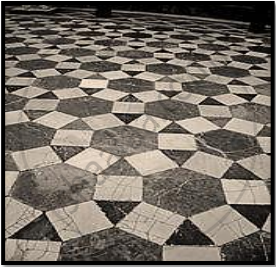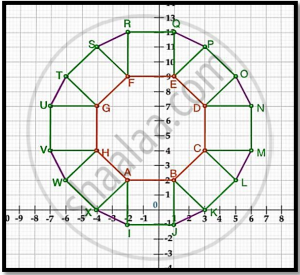Advertisements
Advertisements
Question
In what ratio is the line segment joining (-3, -1) and (-8, -9) divided at the point (-5, -21/5)?
Solution
The co-ordinates of a point which divided two points `(x_1,y_1)` and `(x_2, y_2)` internally in the ratio m:n is given by the formula,
`(x,y) = (((mx_2 + nx_1)/(m + 2))","((my_2 + ny_1)/(m + n)))`
Here it is said that the point `(-5, -21/5)` divides the points (-3,-1) and (-8,-9).
Substituting these values in the above formula we have,
`(-5, -21/5) = (((m(-8) + n(-3))/(m + n))","((m(-9) + n(-1))/(m+ n)))`
Equating the individual components we have,
`-5 = (m(-8) + n(-3))/(m + n)`
-5m - 5n = -8m - 3n
3m = 2n
`m/n = 2/3`
Therefore the ratio in which the line is divided is 2:3
APPEARS IN
RELATED QUESTIONS
On which axis do the following points lie?
Q(0, -2)
Let ABCD be a square of side 2a. Find the coordinates of the vertices of this square when A coincides with the origin and AB and AD are along OX and OY respectively.
Let ABCD be a square of side 2a. Find the coordinates of the vertices of this square when The centre of the square is at the origin and coordinate axes are parallel to the sides AB and AD respectively.
Points P, Q, R and S divide the line segment joining the points A(1,2) and B(6,7) in five equal parts. Find the coordinates of the points P,Q and R
Find the ratio in which the pint (-3, k) divide the join of A(-5, -4) and B(-2, 3),Also, find the value of k.
Show that the points (−2, 3), (8, 3) and (6, 7) are the vertices of a right triangle ?
If `P(a/2,4)`is the mid-point of the line-segment joining the points A (−6, 5) and B(−2, 3), then the value of a is
Show that A(-4, -7), B(-1, 2), C(8, 5) and D(5, -4) are the vertices of a
rhombus ABCD.
If A(3, y) is equidistant from points P(8, −3) and Q(7, 6), find the value of y and find the distance AQ.
If (a,b) is the mid-point of the line segment joining the points A (10, - 6) , B (k,4) and a - 2b = 18 , find the value of k and the distance AB.
ABCD is a parallelogram with vertices \[A ( x_1 , y_1 ), B \left( x_2 , y_2 \right), C ( x_3 , y_3 )\] . Find the coordinates of the fourth vertex D in terms of \[x_1 , x_2 , x_3 , y_1 , y_2 \text{ and } y_3\]
If R (x, y) is a point on the line segment joining the points P (a, b) and Q (b, a), then prove that x + y = a + b.
Two vertices of a triangle have coordinates (−8, 7) and (9, 4) . If the centroid of the triangle is at the origin, what are the coordinates of the third vertex?
If the area of the triangle formed by the points (x, 2x), (−2, 6) and (3, 1) is 5 square units , then x =
If points A (5, p) B (1, 5), C (2, 1) and D (6, 2) form a square ABCD, then p =
Signs of the abscissa and ordinate of a point in the second quadrant are respectively.
A point both of whose coordinates are negative will lie in ______.
Point (3, 0) lies in the first quadrant.
Seg AB is parallel to X-axis and coordinates of the point A are (1, 3), then the coordinates of the point B can be ______.
A tiling or tessellation of a flat surface is the covering of a plane using one or more geometric shapes, called tiles, with no overlaps and no gaps. Historically, tessellations were used in ancient Rome and in Islamic art. You may find tessellation patterns on floors, walls, paintings etc. Shown below is a tiled floor in the archaeological Museum of Seville, made using squares, triangles and hexagons.

A craftsman thought of making a floor pattern after being inspired by the above design. To ensure accuracy in his work, he made the pattern on the Cartesian plane. He used regular octagons, squares and triangles for his floor tessellation pattern

Use the above figure to answer the questions that follow:
- What is the length of the line segment joining points B and F?
- The centre ‘Z’ of the figure will be the point of intersection of the diagonals of quadrilateral WXOP. Then what are the coordinates of Z?
- What are the coordinates of the point on y-axis equidistant from A and G?
OR
What is the area of Trapezium AFGH?
